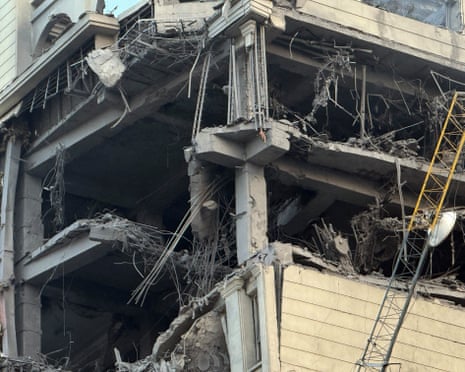Iran Breaks Off Engagement with IAEA, Consequences Await
In a consequential move, Masoud Pezeshkian, President of Iran decreed the cessation of all engagement with the International Atomic Energy Agency (IAEA) on 3rd July. This decision followed the harrowing bombardment of Iran’s central nuclear bases by the United States and accompanied the aerial combat initiated by Israel against Iran.
Forecasts for the next set of discussions between Iran and the IAEA reference complicated technical aspects. These high-level conversations are scheduled following Iran’s bold move to sever ties with the nuclear watchdog last month over mounting tensions.
The antagonism between both parties escalated post the relentless 12-day aerial assault led by Israel and backed by the United States in June. This distressing event resulted in the targeted annihilation of crucial Iranian nuclear establishments.
In a public declaration on June 12, shortly prior to the commencement of the Israeli airstrikes and subsequent conflict over Iran, the IAEA board stated that Iran had violated its non-proliferation commitments. However, no immediate statement was released on the subject of the deputy head of the agency’s visit to Iran, which notably excluded any planned inspection of the Iranian nuclear sites.
Esmail Baghaei, Iran’s Foreign Ministry spokesperson, addresses the possibility of a subsequent encounter with Foreign Minister Abbas Aragchi while admitting the difficulty of speculating the outcome of the awaiting discussions. Baghaei categorizes the talks as complex and technical, owing to the intricate subject matter involved.
During this time, Baghaei also brought attention to the IAEA’s questionable position amid the June conflict with Israel. He pointed out how monitored peaceful facilities within the country became prime targets and expressed discontent at the lack of stern, justified reaction from IAEA’s side.
Foreign Minister Abbas Aragchi, in previous statements, relayed that any further alliance with the agency would involve petitioning the approval of Iran’s Supreme National Security Council, a top-tier security authority. This move is aimed at reevaluating and restructuring the operative dynamics between both entities.
This particular turn of events could potentially pose considerable difficulties to IAEA inspectors seeking insight into Tehran’s elusive program focused on uranium enrichment close to military-grade levels. The announcement of suspension of cooperation made by President Masoud Pezeshkian on July 3 has envisaged a troublesome landscape for transparent nuclear practices.
This pivotal act passed by the Iranian President was prompted by the devastating bombardment of significant Iranian nuclear locations by the U.S., while Israel and Iran locked horns in an air war. The grim aftermath of this destructive incident recorded an estimated 1,100 casualties, a considerable number of which included military personnel.
The Iranian retaliation resulted in the death of 28 individuals in Israel. As the events unfolded, it has been noted that Iran has employed limited IAEA inspection as a strategic move in their negotiations with the West.
However, as of now, it remains uncertain when talks focusing on a potential deal regarding Tehran’s nuclear initiative with Washington will recommence. Moving forward, the task of regulating Iran’s nuclear activity presents itself as a challenging road to navigate.
According to reports by U.S. intelligence agencies and the IAEA, the latest organized nuclear weapons program was under Iran’s command in 2003. At this point, a cloud of ambiguity still hovers over the certainty of these findings.
The report also revealed that Tehran had been processing uranium up to concentrations of 60%, which is alarmingly close to the 90% mark, a critical level for weaponization. This situation exposes a clear threat and raises concerns about possible nuclear proliferation in the region.



